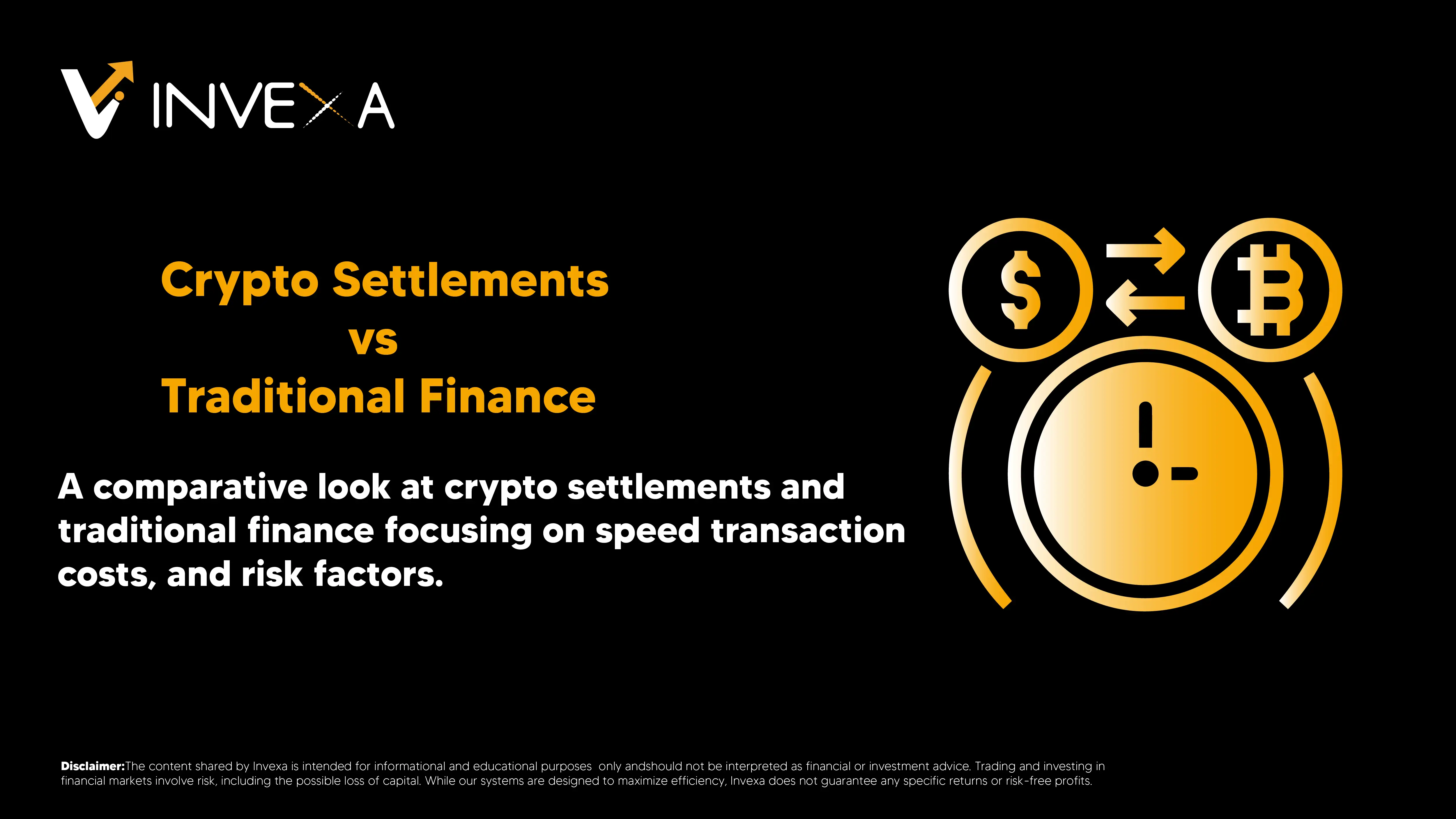
Compare crypto vs traditional settlements. Discover differences in speed cost and risk plus how blockchain stablecoins and CBDCs shape the future of finance.

In finance a settlement is when a trade is finalized money and assets move between parties. In traditional finance this process relies on banks clearing houses SWIFT payments and centralized systems. Depending on the market it can take two or more business days often referred to as T+2 settlement. On the other hand crypto settlements use blockchain networks cryptocurrency exchanges and peer to peer transactions that can confirm in minutes.
One of the biggest advantages of blockchain settlement is speed. Bitcoin transactions Ethereum transfers stablecoin payments and cross border crypto transactions can settle much faster than traditional bank transfers wire payments or ACH systems. Settlement time depends on the blockchain: Bitcoin confirmations can take about 10 minutes while Ethereum settlement Polygon transactions or Solana transfers are often near real time.
In contrast stock market settlement bond settlement and foreign exchange settlement in traditional systems can take days with delays caused by intermediaries time zones and bank holidays. For international remittances crypto offers a faster alternative to SWIFT wire transfers.
Traditional finance involves fees charged by banks brokers payment processors and clearing houses. For example wire transfer fees credit card fees and cross border payment charges can add up. By comparison crypto settlement fees vary based on blockchain gas fees Bitcoin mining costs or Ethereum gas fees but they often bypass multiple middlemen.
Newer solutions like Layer 2 scaling the Lightning Network for Bitcoin and rollups on Ethereum are reducing costs even further. Stablecoins like USDT and USDC make cross border payments cheaper than traditional remittance services such as Western Union or MoneyGram.
Both systems have risks. Traditional finance risks include counterparty risk settlement delays and potential liquidity risks in clearing houses. Crypto meanwhile carries smart contract risk exchange hacks custody risk and volatility in digital asset prices.
However blockchain offers transparency immutability and auditability through distributed ledger technology which helps reduce disputes. At the same time regulatory compliance AML/KYC checks and crypto regulations are still evolving which adds uncertainty for institutional adoption.
Innovations like instant payments CBDCs (central bank digital currencies) tokenized assets and DeFi settlement protocols are blurring the line between crypto and traditional finance. Global projects are exploring real time gross settlement (RTGS) systems built on blockchain making cross border payments securities settlement and derivatives trading faster and cheaper.
The comparison between crypto settlements and traditional finance settlement systems shows clear trade offs. Crypto offers speed lower costs and transparency but carries regulatory risks and technology risks. Traditional finance provides stability consumer protection and integration with fiat currencies but lags behind in settlement efficiency.
As blockchain adoption CBDCs and tokenized securities expand the future of settlement may combine the best of both worlds fast low cost secure systems that improve financial inclusion and global market efficiency.